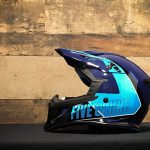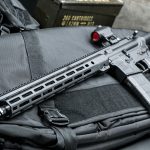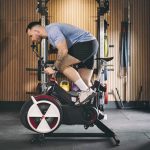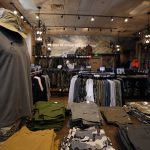The warm weather retailers and vendors have been talking about finally worked its way through the food chain and showed up in SIAs monthly retail audit. With almost no snow in the Eastern and Midwestern regions during December the month that accounts for roughly half of the seasonal SnowSports revenue both chain and specialty SnowSports sales declined. According to the SIA Retail audit, prepared by Leisure Trends, for the August-December period, overall SnowSports sales fell 14% in units and 11% in dollars. These declines were felt primarily in the specialty channel due to the geographic concentration of chain stores in the West.
At specialty retailers, Alpine equipment sales were down, but Snowboard equipment was hit harder and cross country hardgoods saw declines in the mid 30s.
Alpine equipment did see some stand-outs, in spite of the overall declines. The differences in equipment between the east and west became apparent during the period. Carve ski system sales declined 18% on lower unit sales and falling ASPs.
Midfat system sales increased 21% with higher ASPs and units-sold. The midfat category now accounts for 50% of all systems sold. Fat and Super Fat ski sales more than doubled during the period with higher ASPs. Alpine boot sales declined 9% in units and 8% in dollars during the period. High performance boots were the only category to show any increase.
Also of note, ski systems out-sold flat skis in units for the first time this year with 55% of all skis sold now integrated with a binding. Bindingless ski sales declined 13%, but ASPs continue to increase in this category, as more high-end products (and fewer closeouts) work their way into the mix. Superfat and fat bindingless skis seem to be the primary drivers in this category with sales increasing 9% for the period.
Twin-tip sales remained relatively flat in units this year, but higher ASPs boosted overall revenue generated by the category by 11%. Retailers have only sold 38% of their twin tip inventory at the end of December, compared to 47% last year.
The warm weather is causing retailers to push carry-over product out the door to generate some cash-flow. Carryover sales were up 37% for the period.
Overall Snowboard Equipment sales were down in the mid-teens, but some categories are still performing well for the period. All-mountain board sales increased 27% on higher ASPs and an 18% increase in units-sold. All other categories of snowboards saw double-digit declines. Binding sales were also down in the mid-teens with boot sales down approximately 18%. Carryover sales ramped up again this year carryover boards were up 38%, bindings were up 27%, and boots were up 58%.
Inventories appear to be up across all categories of hardgoods. At the end of December, Alpine ski inventories were up by roughly 36,000 units at specialty retailers; Alpine boot inventories were up by 72,000 units. Snowboards are only 50% sold-through with over 214,000 units in inventory, compared to 55% sold through last year. With this much stock still on the shelves, and several warnings coming from key vendors throughout the industry, it appears that 2007-08 pre-season orders are likely to be well below average. The good news is that most retailers have been able to clear out old merchandise.
The saving grace for specialty retailers this year has been apparel. Total apparel sales for the August-December period increased 8%, but moderately lower ASPs limited this growth slightly. Apparel accounted for 51% of all revenue generated through specialty retail this year. Top categories so far this year include insulated parkas, which increased 19%; Softshells, which increased 22%, and vests, which increased 21%. Pant sales reflected the same trend as hardgoods with an 11% decline in sales. Overall snowboard apparel sales were only down 2% with a much more even distribution. Sales of tops increased 4% and sales of bottoms declined 4%.
Total accessory sales were down 7% compared to the same period last year with equipment accessories down 11% and apparel accessories down 4%. Snowshoes sales were down 40% for the period while sunglasses, goggles, and helmets all saw declines, as well. The only equipment accessory category to grow this year was technical daypacks, which inched up 1%. Gloves, socks, and base layers all saw a mid-singles decline, while winter boot sales increased 5%.
While the warm weather continued through January, this latest round of heavy pre-Presidents Day blizzards in the Northeast and Midwest may be enough to boost sales to break even for the year.
| SIA SnowSports Retail Audit | |||
| 2006 Aug.-Dec. Specialty Store Results | |||
| (Select Equipment & Apparel Categories) | |||
| (in $ millions) | 2006 | 2005 | Change |
| Total | $1,110 | $1,151 | -4% |
| Equipment | $374.1 | $421.7 | -11% |
| Alpine | $230.6 | $247.3 | -7% |
| Nordic | $12.6 | $18.8 | -33% |
| Telemark | $2.5 | $3.6 | -29% |
| Randonee/AT | $1.2 | $0.9 | 29% |
| Snowboard | $127.2 | $151.1 | -16% |
| Apparel | $403.6 | $372.5 | 8% |
| Alpine | $340.9 | $308.7 | 10% |
| Snowboard | $62.6 | $63.8 | -2% |
| Accessories | $331.9 | $357.3 | -7% |















